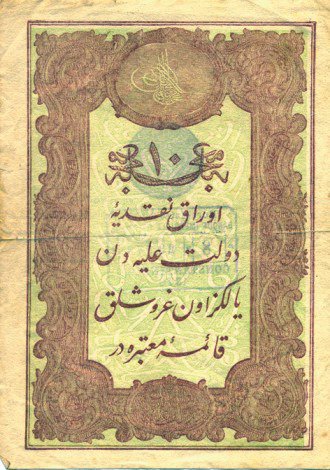Imagining the Balkans
dal 7/4/2013 al 24/8/2013
Segnalato da
7/4/2013
Imagining the Balkans
Narodni Muzej Slovenije - National Museum of Slovenia, Ljubljana
Identities and Memory in the Long 19th Century. The travelling exhibition, coordinated by UNESCO, focuses on the constitution and evolution of modern nations in South-East Europe during the 'long 19th century'. The exhibition, structured around 10 thematic areas, rather than on the lines of exclusive and contrasting parallel national histories and narratives, presents shared key processes and experiences, common features and historical interactions, including with the rest of Europe.

The travelling exhibition “Imagining the Balkans. Identities and Memory in the Long 19th Century” opens in
Ljubljana (Slovenia) at the National Museum on 8th April 2013, at 6 PM.
The exhibit will be inaugurated on the occasion of the meeting of the Council of Ministers of Culture of
South-East Europe, in the presence of the Director-General of UNESCO, Irina Bokova, the Minister of
Culture, Uroš Grilc, the President of the International Council of Museums (ICOM), Hans-Martin Hinz, and
the Director of the National Museum of Slovenia, Barbara Ravnik. All Ministers of Culture from South-East
Europe will attend the opening.
This project is coordinated by UNESCO (Regional Office for Science and Culture in Europe, Venice) within
the framework of its global initiative “Culture: a Bridge to Development”, with the cooperation of the
International Council of Museums (ICOM) and the International Committee for Exhibitions and Exchange
(ICOM/ICEE), to enhance cooperation and dialogue among national history museums. It is a travelling
exhibition, focusing on the constitution and evolution of modern nations in South-East Europe during the
“long 19th century”.
Participating museums are: National History Museum (Albania), Museum of the Republic of Srpska (Bosnia
and Herzegovina), National History Museum (Bulgaria), Croatian History Museum (Croatia), Leventis
Municipal Museum of Nicosia (Cyprus), German Historical Museum (Germany), National Historical Museum
(Greece), National Museum of Montenegro (Montenegro), National History Museum of Romania
(Romania), Historical Museum of Serbia (Serbia), Museum of Macedonia (The former Yugoslav Republic of
Macedonia), National Museum of Slovenia (Slovenia).
The exhibition has been produced with the belief that nations and their history need not be just a matter of
division, and developed as a historic opportunity to place national histories in a global context, compare
disputed narratives and revive shared memories. This is the very first time that all the national history
museums of South-East Europe have come together to put in perspective and compare their collections
and their national histories. The exhibition, structured around 10 thematic areas, rather than on the lines of
exclusive and contrasting parallel national histories and narratives, presents shared key processes and
experiences, common features and historical interactions, including with the rest of Europe.
The thematic paths are: Living in the old world; Travelling, communicating; A new social order: the rise of
the middle classes; Creating and diffusing knowledge; Mapping; Using history, making heroes; Public
celebrations; and Image of the Nation. The exhibit is completed by a thematic introduction on coffee
culture and concluded around the film “Whose is this Song?” (Adela Peeva, 2003).
The exhibit is financially supported by UNESCO, ICOM, ICOM/ICEE (International Committee for Exhibitions
and Exchange). Other organizations and institutions (Council of Europe, International Association of
Museums of History, Eunamus/European National Museums network, ICOM/ICEE, Euroclio) have
participated in preparatory work. The historical advisor to the exhibition is Professor Maria Todorova
(University of Illinois, Urbana-Champaign, United States of America).
The exhibit will travel to Belgrade (Serbia) and Bucharest (Romania) in September/December 2013.
Image: Banknote for 10 kurush, issued by the Ottoman Bank, 1876, The Museum of Republic of Srpska, Banja Luka; The first banknotes were put into circulation during the Tanzimat period (1839-1876), when administrative, social and legal reforms were on the agenda. Banknotes were issued mainly to finance the reforms.
Media contacts
Anne Ajoux, UNESCO Regional Bureau for Science and Culture in Europe, Venice (Italy)
Tel: + 39 (041) 260.15.22; Email: a.ajoux@unesco.org
Aurélie Aubourg, Director of Communication and Network Promotion,
ICOM - International Council of Museums
Tél. + 33 1 47 34 91 63 ; Email : aurelie.aubourg@icom.museum
Tjaša Gračner, Nina Vošnjak, National Museum of Slovenia, Public Relations
Email: tjasa.gracner@nms.si, ninavosnjak@gmail.com
Websites:
National Museum of Slovenia: http://www.nms.si
UNESCO Regional Bureau for Science and Culture in Europe, Venice (Italy): unesco.org/venice
Opening on 8th April 2013, at 6 PM
National Museum of Slovenia/Narodni muzej Slovenije
Prešernova 20, 1000 Ljubljana
HOURS OF OPERATION
Daily from 10am to 6. pm, thursdays to 8. pm.
Closed: January 1st, May 1st, November 1st and December 25th.
ADMISSION
Adults 3 €
Retired/Pensioners 2,5 €
Students 2,5 €
Family 6 €
School groups 2,5 €
Groups of more than 10 2,5 €
Guided tours/groups to 15 (in Slovene) 15 € (fixed price; valid also for individual guide)
Guided tours/groups over 15 (in Slovene) 1 € per person
Guided tours/school groups (in Slovene) 0,70 € per person
Guided tours in English 1,25 € per person



